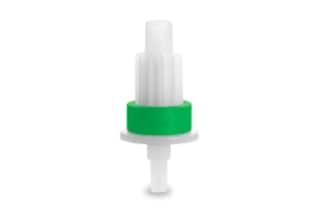
|
UNSPSC |
41115712 |
|
Brand |
Sep-Pak |
|
Product Type |
Solid Phase Extraction |
|
Units per Package |
50 pk |
|
Chemistry |
Alumina N |
|
Format |
Plus Light Cartridge |
|
Mass Spec Compatibility |
Yes |
|
Mode |
Normal-phase |
|
Particle Size |
50 - 300 µm |
|
Pore Size |
120 Å |
|
Sorbent Substrate |
Alumina |
|
Sorbent Weight |
280 mg |
|
Water Wettable |
Yes |
|
pH Range Min |
0 pH |
|
pH Range Max |
10 pH |
|
Hold up volume |
0.35 mL |
Sep-Pak Alumina N Plus Light Cartridge, 280 mg Sorbent per Cartridge, 50-300 µm, 50/pk
As the original and most widely referenced silica-based SPE products, the Sep-Pak line was the start of the growth of solid-phase extraction as an industry. The innovative lab equipment in this line continues to be the most widely referenced SPE product in the world by a nine-fold margin.
A part of the Waters Sep-Pak family of products, the Sep-Pak Alumina N Plus Light Cartridge contains a highly active grade of alumina with a neutral surface chemistry. This aluminum oxide surface provides an extremely polar surface for analyte retention and offers the properties of Lewis acid. The normal phase sorbent found in this cartridge is similar in use to that of silica; however, it is slightly more stable than unfunctionalized silica is under high pH conditions. The neutral alumina is suitable for a range of applications, including synthetic crude oil fractionation.
The Sep-Pak Alumina N Plus Light Cartridge features a distinctive finned outer body and a reduced internal diameter which allows for an interstitial volume about 1/3 that of the corresponding Plus-style cartridge. With this design, chromatographers are able to elute fractions in minimal volume, which improves recoveries as well as reduces solvent consumption. This is beneficial, especially in applications where samples may be limited or excessive dilution is a concern.
Each cartridge contains 280 mg of sorbent and has a particle size of 50-300 µm and a pore size of 120 Å. The pH range is 0 to 10 and the hold up volume offered is 0.35 mL. A total of 50 cartridges are included in each order. A Long Needle Valve for Sep-Pak Device Vacuum Manifold, 20/pk can be purchased as needed.
How does SPE Work?
Sample Phase Extraction, often known as SPE, is column liquid-solid chromatography, which means its practice is governed by LC principles. A sample is introduced into a column or cartridge device that contains a bed of appropriate particles, or another form, of a chromatographic packing material. This is known as the stationary phase. Solvent, the mobile phase, then flows through the bed. When the appropriate combination of phases is used, the sample components can pass directly through the column bed or be selectively retained.